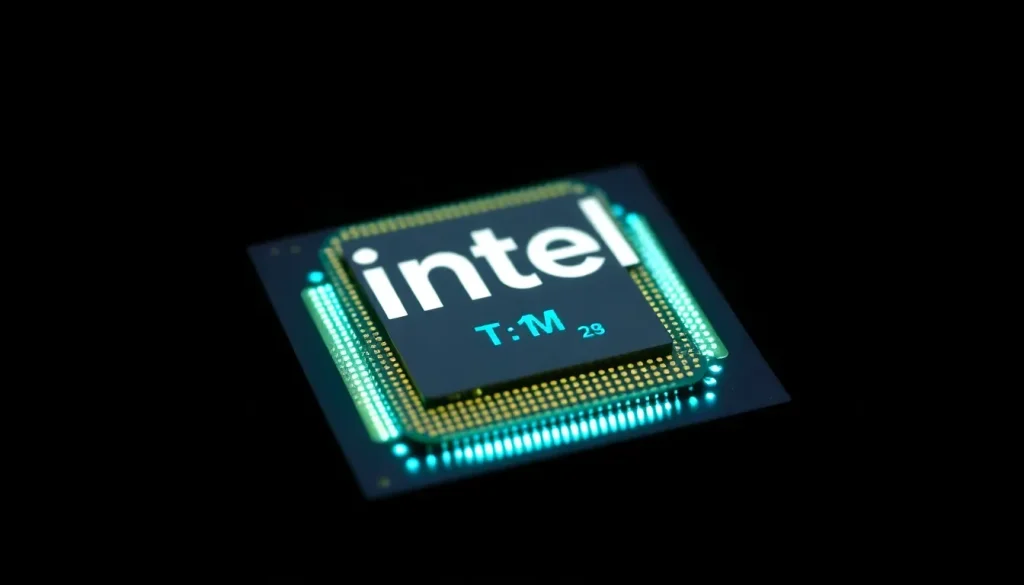Intel unveils Panther Lake, its first 2 nm chips to overcome crisis

Intel has recently unveiled its latest architectural innovation, Panther Lake, which marks a significant leap forward as the company's first architecture developed on the Intel 18A process at 2 nanometers. This announcement is a crucial step for Intel as it aims to recover from recent setbacks in the semiconductor industry and regain its competitive edge. Panther Lake is set to power the upcoming Intel Core Ultra series 3 chips, designed primarily for laptops, which will incorporate advanced features to enhance performance and user experience.
This new architecture not only showcases Intel's commitment to innovation but also emphasizes its scalability and modularity. Panther Lake promises to deliver a more powerful integrated GPU alongside cutting-edge CPU cores, positioning itself as a formidable player in the market. Improvements in connectivity, multimedia processing, memory bandwidth, and artificial intelligence functionalities are also key highlights of this architecture, all while maintaining high energy efficiency.
Key Features of Panther Lake
The Panther Lake chips are designed to provide performance levels comparable to those of the Arrow Lake family, while harnessing the energy efficiency seen in the Lunar Lake processors. With the Intel 18A process, Intel aims to combine the best attributes of both architectures, leading to a more versatile and powerful computing solution. Users can expect the following enhancements:
- Significantly improved processing power
- Robust integrated graphics capabilities
- Enhanced connectivity options including Wi-Fi 7 and Bluetooth 6
- Improved memory bandwidth for faster data access
- Advanced AI processing features
According to Intel, these chips will not only cater to personal and commercial laptops but are also expected to find applications in gaming devices and robotics, showcasing their versatile use cases.
Technical Specifications
The initial release of the Panther Lake System on Chip (SoC) will offer configurations with either 8 or 16 cores. The latter will feature a variant with up to 12 next-generation graphics cores, highlighting Intel's focus on catering to various user needs. Here’s a breakdown of the key specifications:
| Configuration | CPU Cores | GPU Cores | Memory Support | Connectivity |
|---|---|---|---|---|
| 8-core Panther Lake | 4 Cougar Cove, 4 Darkmont LP | 4 Xe3, 4 Ray Tracing | Up to 96 GB LPDDR5X at 6,800 MT/s | WiFi 7, Bluetooth 6, Thunderbolt 4 |
| 16-core Panther Lake | 4 Cougar Cove, 8 Darkmont, 4 Darkmont LP | 4 Xe3, 4 Ray Tracing | Up to 96 GB LPDDR5X at 8,533 MT/s | WiFi 7, Bluetooth 6, Thunderbolt 4 |
| 16-core with 12 GPU Cores | 4 Cougar Cove, 8 Darkmont, 4 Darkmont LP | 12 Xe3, 12 Ray Tracing | Up to 96 GB LPDDR5X at 9,600 MT/s | WiFi 7, Bluetooth 6, Thunderbolt 4 |
Intel claims that both the CPU and GPU in these new chips will deliver a performance boost of over 50% compared to their predecessors. This substantial improvement will be crucial as Intel faces competition from Qualcomm’s recent Snapdragon X2 Elite and X2 Elite Extreme chips, which are designed to enhance Windows on ARM devices.
Market Availability
Intel has committed to releasing its first Panther Lake chips before the end of the year, with broader availability expected by early 2026. Notably, these will be the first 2-nanometer processors developed and manufactured in the United States at Intel's new Fab 52 facility located in Arizona.
In addition to the Intel Core Ultra series 3, the company plans to roll out a server chip named Xeon 6+ (Clearwater Forest), also built on the Intel 18A process. This move not only signals Intel's ambition to reclaim its position in the semiconductor market but also highlights its focus on developing high-performance solutions for a wide array of applications.
The Future of Computing with Panther Lake
As the computing landscape continues to evolve, Intel's Panther Lake architecture is poised to play a pivotal role in shaping future technologies. With the integration of advanced AI capabilities, enhanced graphics performance, and improved energy efficiency, Panther Lake could redefine what users expect from their devices, paving the way for more powerful and versatile computing solutions.
This innovation is a testament to Intel's resilience and commitment to pushing the boundaries of technology, ensuring that it remains a leading force in the semiconductor industry. For those interested in a deeper dive into Intel's latest developments, here’s a brief video overview:




Leave a Reply